
MLCC - Multi-layer chip ceramic capacitors, referred to as chip capacitors, can cause noise whistling problems...
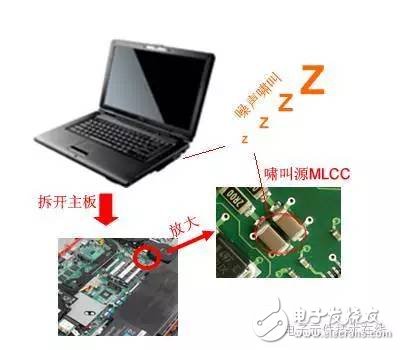
The sound originates from the vibration of the object, and the sound wave with a vibration frequency of 20 Hz to 20 kHz can be recognized by the human ear.
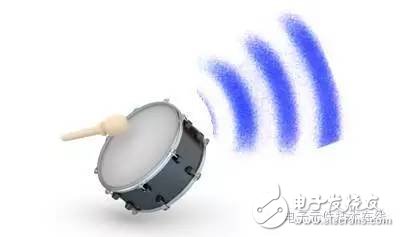
The MLCC emits a howling sound, that is, the MLCC undergoes a large amplitude vibration under the action of a voltage (a microscopically large, less than 1 nm).
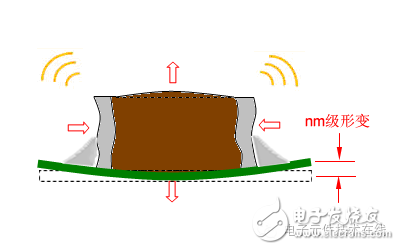
Why does MLCC vibrate?
We must first understand a natural phenomenon - electrostriction.
Under the action of an external electric field, all substances will undergo telescopic deformation - electrostriction.
For some high dielectric constant ferroelectric materials, the electrostrictive effect is intense, called the piezoelectric effect.
Piezoelectric effects include positive and negative piezoelectric effects
Positive piezoelectric effect
Mechanical stress is applied to the dielectric material having piezoelectric properties, and the dielectric crystals are structurally reorganized, and the surface of the material induces a charge to generate a potential difference.
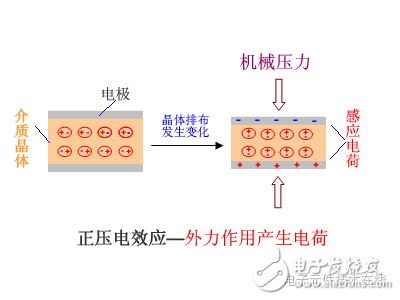
Inverse piezoelectric effect
When a voltage is applied to a dielectric material having piezoelectric characteristics, mechanical stress is generated and deformation occurs.
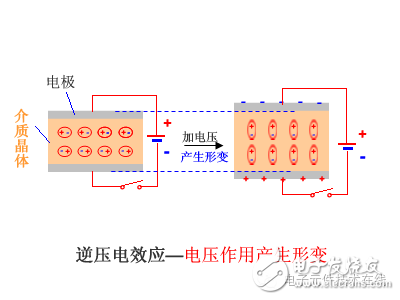
The academic definition of the piezoelectric effect:
"When pressure, tension and tangential force are applied to a crystal without a symmetry center, a dielectric polarization proportional to stress occurs, and positive and negative charges appear at both ends of the crystal. This phenomenon is called positive piezoelectric effect. Conversely, when an electric field is applied to the crystal to cause polarization, a deformation or mechanical stress proportional to the electric field strength is generated, which is called an inverse piezoelectric effect. These two positive and negative piezoelectric effects are collectively referred to as a piezoelectric effect. â€
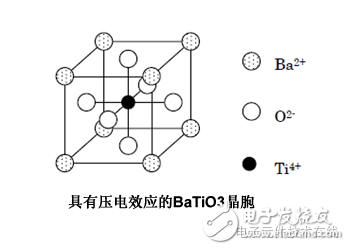
The ceramic medium is the main component of MLCC, and electrostriction is inevitable under voltage. If electrostriction is strongly expressed as a piezoelectric effect, vibration will occur.
Will all MLCCs scream?
MLCC designs and manufactures ceramic dielectric materials mainly in two major categories: paraelectric and ferroelectric.
Paraelectric medium
Also known as Class I media, mainly SrZrO3, MgTiO3 and so on.
The electrostrictive deformation of the paraelectric medium is small and is insufficient to generate noise at the operating voltage.
Therefore, MLCC made of a dielectric (type I medium) material, such as a temperature stability product such as NPO (COG), does not generate noise whistling.
Ferroelectric medium
Also known as class II media, mainly BaTiO3, BaSrTiO3 and so on.
Ferroelectrics have a strong electrostrictive property - the piezoelectric effect.
Therefore, MLCC made of ferroelectric (type II medium), such as X7R/X5R characteristic products, will produce significant noise whistling under the action of large AC electric field strength.

As shown above, after a large change voltage is applied to both ends of the X7R-MLCC, the BaTiO3 ceramic undergoes an inverse piezoelectric effect, and the MLCC is deformed and transmitted to the PCB for resonance.
When the frequency of the voltage signal is within the range of 20 Hz to 20 kHz, the speaker can hear the whistling.
What occasions is the MLCC whistling obvious?
Large alternating voltage, frequency between 20Hz and 20kHz, using X7R/X5R medium and high capacity MLCC, will produce obvious howling, such as switching power supply, high frequency power supply and other occasions.
Howling
Many mobile electronic devices are close to the human ear, such as laptops, tablets, smart phones, etc., such as audible noise in electronic circuits can affect the use of the experience.
In addition to the horrible whistling, there may be hidden dangers of insufficient reliability design.
The violent whistling is caused by severe vibration, and the amplitude of the vibration is determined by the degree of piezoelectric effect.
The piezoelectric effect is proportional to the electric field strength, the applied voltage is constant, the thinner the medium, the stronger the piezoelectric effect, and the louder the howling sound.

The rated voltage is determined by the material of the MLCC and the thickness of the medium. The severe whistling indicates that the thickness of the MLCC medium selected for the current working voltage is too thin, and the MLCC with a thicker medium and higher rated voltage should be considered.
For ferroelectric ceramics, under the action of alternating electric field, there are also problems in the alternating steering of internal friction of ferroelectric domains. The alternating field is strong, the internal friction is serious, and the probability of failure increases. This can be reflected in the size of the howling sound.

Countermeasures to solve howling
There are many ways to reduce the audible noise generated by MLCC capacitors, and all solutions add cost.
1. Changing the capacitor type is the most straightforward method, replacing it with a capacitor that does not have a piezoelectric effect, such as a parasitic ceramic capacitor, a tantalum capacitor, and a thin film capacitor. But you need to consider issues such as volume, reliability, and cost.
2. Adjust the circuit to eliminate the large alternating voltage applied to the MLCC or shift its frequency out of the human ear listening frequency band (the most sensitive audio of the human ear is 1KHz~3KHz).
3, pay attention to PCB layout, PCB board specifications, help reduce the level of howling.
4. Select MLCC with no noise or low noise.
Noiseless/low noise MLCC design
At present, there are three design solutions for the whistling phenomenon of MLCC.
(1) thickened bottom protective layer
Since the thickness of the protective layer is free of internal electrodes, this part of the BaTiO3 ceramic will not be deformed. When the soldering height of the two ends does not exceed the thickness of the bottom protective layer, the deformation generated at this time has less influence on the PCB, and the noise is effectively reduced.
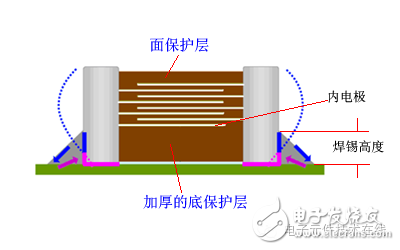
(2) Additional metal bracket structure
The structure is as follows, which uses a metal bracket to lift the MLCC chip.
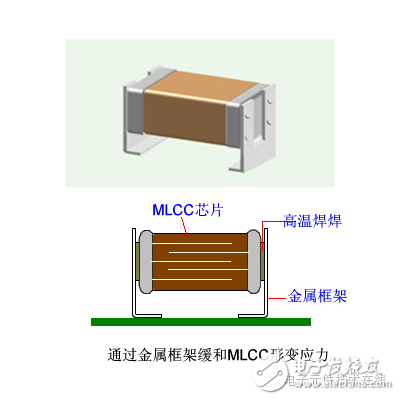
The MLCC is separated from the PCB board, and the deformation of the inverse piezoelectric effect is elastically buffered by the metal bracket to reduce the effect on the PCB board and effectively reduce noise.
(3) Design and manufacture of dielectric materials with weak piezoelectric effect
By further doping the barium titanate (BaTiO3) to sacrifice a certain dielectric constant and temperature characteristics, a dielectric material with greatly reduced piezoelectric effect is obtained, and the MLCC manufactured by the same can effectively reduce noise.
All major MLCC manufacturers have MLCC product series with corresponding low noise materials.
A slip ring is an electromechanical device that allows electricity and data to pass through a rotating assembly. A mercury slip ring uses liquid mercury as the electrically conductive element inside the rotating assembly, as opposed to traditional carbon brushes. Mercury is a better conductor of electricity than carbon, and it also has a very low contact resistance. This makes it an ideal choice for applications that require high-speed data transmission or where reliability is critical. Mercury slip rings are used in a variety of industries, including medical technology, aerospace, and defense.
Why do we choose a mercury slip ring?
A slip ring is an electromechanical device that allows electrical current to pass between rotating objects. Slip rings are often used in applications where a cable or connector would otherwise twist and tangle as the object rotates. There are many different types of slip rings, but one of the most common is the mercury slip ring. Mercury slip rings offer several advantages over other types of slip rings, including high reliability, low maintenance, and long life. Here are three reasons why we choose a mercury slip ring:
1. Reliability: Mercury is an extremely reliable material, and mercury slip rings are among the most reliable types of slip rings available. Mercury has a very low failure rate, and it is not affected by changes in temperature or humidity. This makes mercury slip rings ideal for critical applications where reliability is essential.
2. Low Maintenance: Mercury slip rings require very little maintenance. Because mercury is a very inert substance, it does not corrode or generate any corrosive gases that would affect its reliability. Mercury slip rings do not require any lubrication, and they can operate in a wide range of temperatures and environments.
3. Economical Mercury slip rings have a lifetime cost advantage over other types of slip rings as well. Generally speaking, mercury slip rings are approximately 25% more expensive per kilowatt than other types of slip rings. However, because they require less maintenance and have a greater degree of reliability than other types of slip rings, they will save you money over the lifetime of your equipment.
Mercury Slip Ring,Slip Ring Gigabit Ethernet,Slip Ring 400V,Slip Ring Pneumatic
Dongguan Oubaibo Technology Co., Ltd. , https://www.sliproubos.com